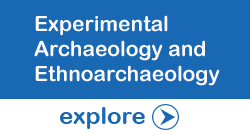Speakers_Nov_2020
Down Ancient Trails: About our Speakers
NOVEMBER 2020
Return to home page of Down Ancient Trails Speakers: May 2020 * Speakers: June 2020 * Speakers:July 2020, Speakers: August 2020, Speakers: September 2020 Speakers October 2020 Speakers November 2020
30th November, 6.30 pm (IST) Dr. Ajay Pratap, Professor (and former Head of Department) of History at Banaras Hindu University. Topic: Historicizing Vindhyan Rock Art
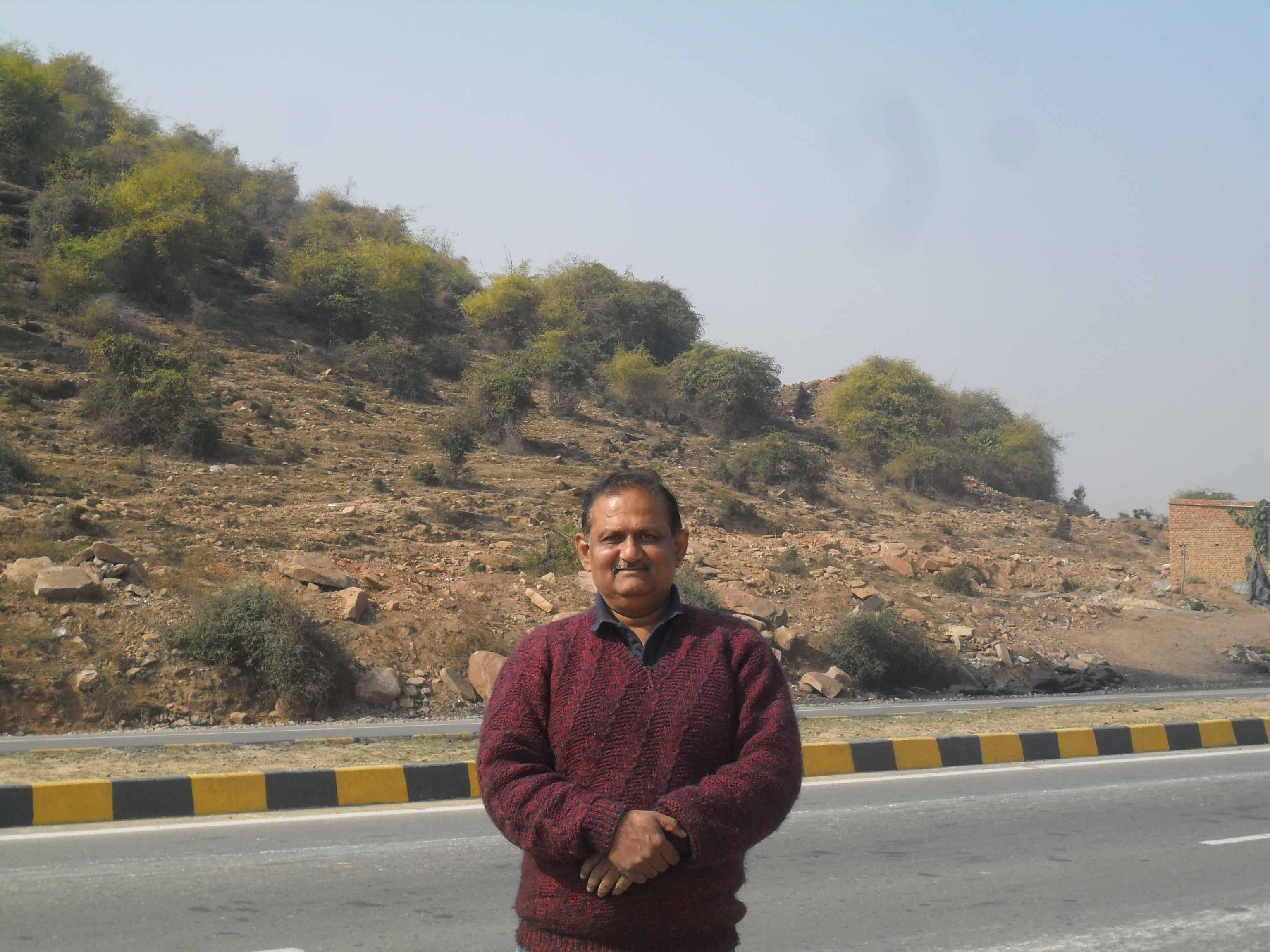 Abstract: This paper summarizes the field documentation work in the Vindhyas (2009-2016) for recording the rock art evidence at some of the 250 rock art sites of Sonbhadra and Mirzapur districts for testing its feasibility as historical evidence for reconstructing the history of the region. Tribal ethnohistories of regions as Southern Uttar Pradesh are languishing because historians seldom if ever appreciate that rock art encodes memories, factual or otherwise, and as such constitute early ‘historical consciousness’. This paper discusses the ways and means of integrating rock art into proper historical discourse as histories of settlement, technology, subsistence, and cultural change, in a total history perspective.
Abstract: This paper summarizes the field documentation work in the Vindhyas (2009-2016) for recording the rock art evidence at some of the 250 rock art sites of Sonbhadra and Mirzapur districts for testing its feasibility as historical evidence for reconstructing the history of the region. Tribal ethnohistories of regions as Southern Uttar Pradesh are languishing because historians seldom if ever appreciate that rock art encodes memories, factual or otherwise, and as such constitute early ‘historical consciousness’. This paper discusses the ways and means of integrating rock art into proper historical discourse as histories of settlement, technology, subsistence, and cultural change, in a total history perspective.
About: Dr. Ajay Pratap is Professor (and former Head of Department) of History at Banaras Hindu University. He earned his BA (Hons.) in History from St. Stephen’s College (1979), University of Delhi, his M.A. in Ancient Indian History, Culture and Archaeology, from the Deccan College, University of Poona (1981), his M. Phil and PhD in Archaeology, from the Department of Archaeology, University of Cambridge, U.K (1983 AND 1988). He joined Banaras Hindu University in 2004 and is currently teaching Ancient Indian History, Tribal History of India (a course he designed), Research Methodology, Science and Technology in Ancient India, History of North and South India AD 600 to 1200, State and Economic Life in Ancient India. He is an avid fieldworker and has carried out a field project involving Vindhyan Rock Art and is currently working on a project on Early Human Settlement in the Sone-Vindhyan Region. He has published 40 research articles and papers and three books – The Hoe and the Axe. Ethnohistory of Shifting Cultivation in Eastern India. Oxford University Press. New Delhi. 2000, Indigenous Archaeology in India. British Archaeological Reports. Oxford. 2009, Rock Art of the Vindhyas. An Archaeological Survey. Archaeopress Publishing. Oxford. 2016. He is a Fellow of the Royal Anthropological Institute and the Royal Asiatic Society.
PAST SPEAKERS
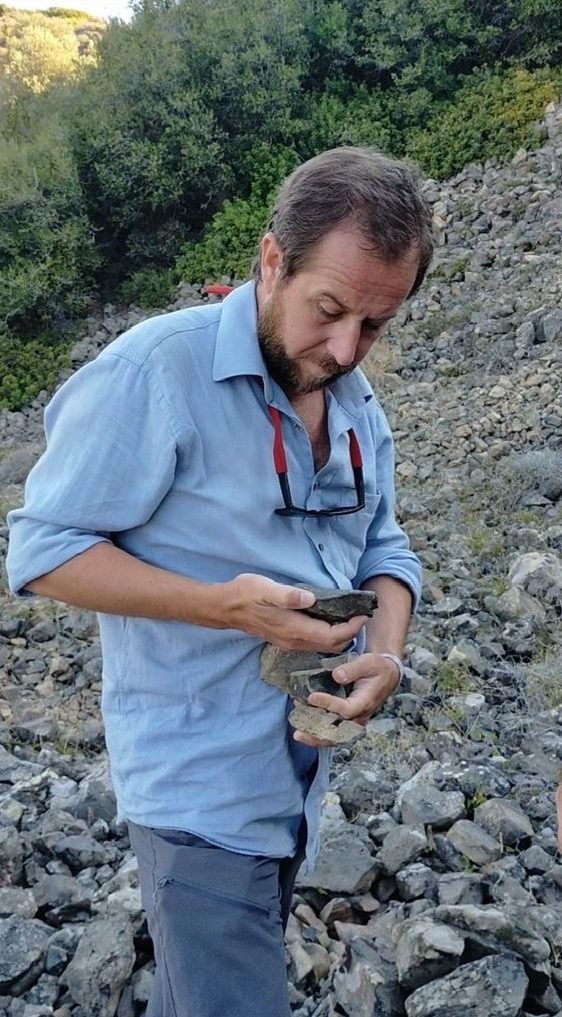 27th November, 2020, 6.30 pm (IST). Dr. Berkay Dinçer, Associate Professor, Department of Anthropology, Istanbul University, Turkey Topic: Recent Developments in Turkish Lower and Middle Paleolithic
27th November, 2020, 6.30 pm (IST). Dr. Berkay Dinçer, Associate Professor, Department of Anthropology, Istanbul University, Turkey Topic: Recent Developments in Turkish Lower and Middle Paleolithic
Abstract: Turkey is located on the land bridge from Africa to Eurasia. The climate of the country is generally characterized by harsh winters. Its mountainous landscape created many isolated basins and thus high level of faunal and floral endemism through the Pleistocene. Recent researches in the country proved that this endemism is also applicable to the Paleolithic lithic technologies. This talk presents the latest discoveries in the Lower and Middle Paleolithic archaeology of Turkey.
About: Berkay Dinçer is a Paleolithic archaeologist at the Anthropology Department of Istanbul University. His main research interests include lithic analysis and the dispersals of early hominins through Anatolia during Lower and Middle Paleolithic. He has participated and conducted surveys and excavations in many parts of Anatolia in the last 20 years. (https://avesis.istanbul.edu.tr/berkay.dincer)
Selected publications about this talk:
Dinçer, B., 2016 "The Lower Paleolithic in Turkey: Anatolia and hominin dispersals out of Africa", In K. Harvati & M. Roksandic (eds.), Paleoanthropology of the Balkans and Anatolia: Human evolution and its context. Dordrecht: Springer: 213–228.
Dinçer, B., 2014 "The Paleolithic of Kocasu Basin (NW Anatolia)", Regional Studies in Archaeology Symposium Proceedings, Erciyas, D. B., E. Sökmen (eds.), Ege Yayınları, İstanbul: 23-50.
Çilingiroğlu Ç., Dinçer B., Uhri A., Gürbıyık C., Baykara İ., Çakırlar C., 2016 "New Palaeolithic and Mesolithic sites in the eastern Aegean: the Karaburun Archaeological Survey Project", Antiquity 90/353 (Project Gallery): 1-6.
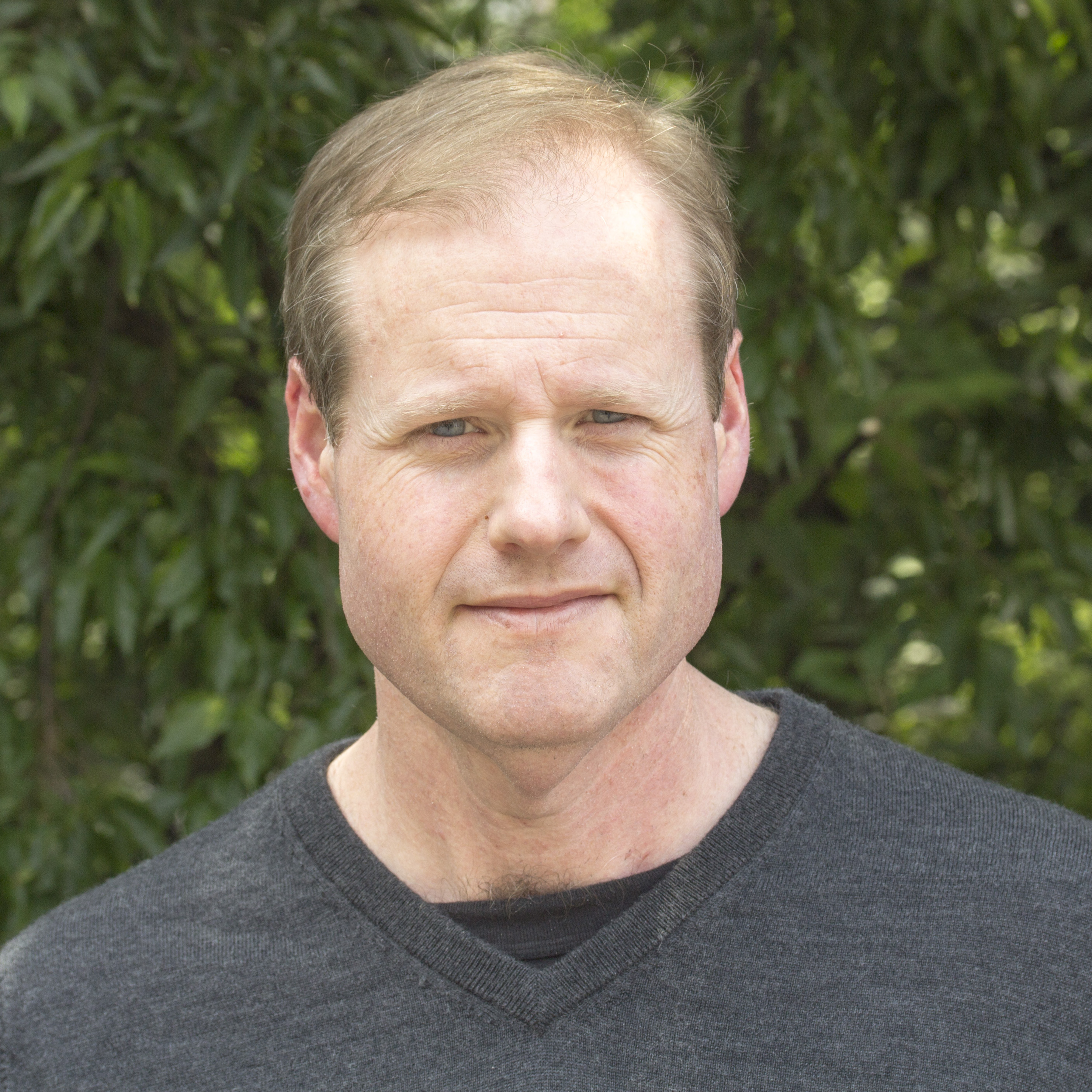 23th November, 2020, 6.30 pm (IST). Dr. Dietrich Stout, Director of Graduate Studies, Department of Anthropology, Emory University. Topic: Stone tools and human evolution: life in the technological niche.
23th November, 2020, 6.30 pm (IST). Dr. Dietrich Stout, Director of Graduate Studies, Department of Anthropology, Emory University. Topic: Stone tools and human evolution: life in the technological niche.
Abstract: Recent progress in fields such as evolutionary biology, neuroscience and psychology is breathing new life into the venerable paleoanthropological concept of biocultural co-evolution. An “extended evolutionary synthesis” incorporating concepts such as niche construction, the evolution of development, phenotypic accommodation, and gene-culture co-evolution is paralleled by increasing recognition of the bodily and environmental grounding of cognitive processes and the emergence of structure in extended brain-body-behavior networks operating on multiple time-scales. In this framework, tool-making can be appreciated as a culturally transmitted skill acquired through deliberate practice. It is also a key component of a human cultural niche that supports our unique adaptive strategy of large brains, cooperative breeding, and extended development. By deploying methods from the neural and behavioral sciences to understand this archaeologically visible behavior, we can hope to more broadly illuminate the evolution of the human mind, brain and culture. Of particular relevance are experimental studies of tool-making skill acquisition, which are now providing evidence of: 1) the practice investment required for particular Paleolithic skills, 2) the effects of different teaching/learning conditions, 3) plastic brain structural responses to training, 4) individual co-variation in brain anatomy and tool-making aptitude.
About: Dietrich Stout is an Associate Professor of Anthropology at Emory University and Associate Director of Emory’s Center for Mind, Brain, and Culture. He received his Ph.D. in Paleoanthropology in 2003 from Indiana University, Bloomington, where he studied with Nicholas Toth and Kathy Schick. He served as a Visiting Assistant Professor in Anthropology at George Washington University for 1 year and as a Lecturer (equivalent U.S. Asst. Prof.) in Paleolithic Archaeology at the University College London Institute of Archaeology for 4 years before relocating to Emory in 2009. His research focus on Paleolithic stone tool-making and human brain evolution integrates methods ranging from archaeological survey, excavation, and artifact analysis to experimental tool replication, psychometric testing, and brain imaging. Dr. Stout has authored more than 30 peer-reviewed publications including articles in journals ranging from Science to Current Anthropology, The Journal of Human Evolution, and The Journal of Neuroscience.
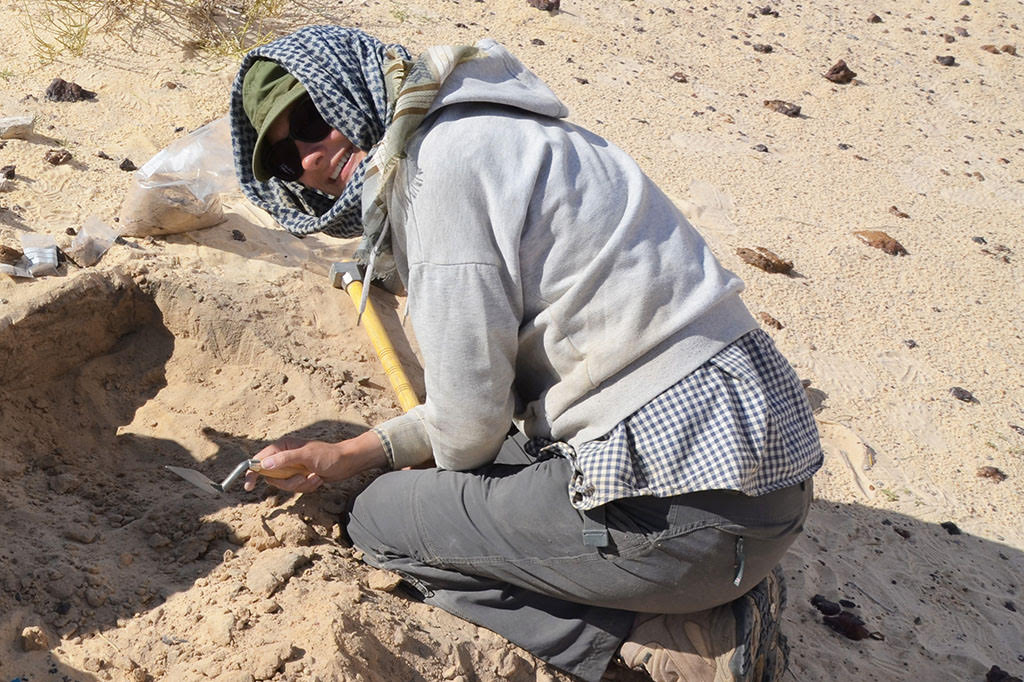 November 18th, 2020, 6.30 pm (IST) Dr. Eleanor Scerri, Pan-African Evolution Research Group, Max Planck Institute for the Science of Human History, Germany and Department of Classics and Archaeology, University of Malta, Malta. Topic: How West Africa is changing what we know about the deep human past
November 18th, 2020, 6.30 pm (IST) Dr. Eleanor Scerri, Pan-African Evolution Research Group, Max Planck Institute for the Science of Human History, Germany and Department of Classics and Archaeology, University of Malta, Malta. Topic: How West Africa is changing what we know about the deep human past
Abstract:The West African Stone Age has only played a peripheral role in elucidating the deep human past. This is due to the fact that very little research has focused on West Africa, owing to an ongoing perception that the region was far from the main stage of human evolution in eastern or southern Africa. The recent recognition that the whole of the African continent should be understood if we are to obtain a more realistic picture of human origins has highlighted the problems of ignoring large swathes of Africa. Although redressing these problems is still in its infancy, new research in West Africa is beginning to shed light on the deep human past in this region. Preliminary results will be presented in this talk suggesting that evolutionary sequences in West Africa have their own regional signatures. Once again, this emphasising the dangers of extrapolating knowledge from small, relatively well researched areas to large and poorly understood regions.
About: Eleanor Scerri is the head of the Pan-African Evolution Research Group, and independent group situated at the Max Plancl Institute for the Science of Human History in Jena, Germany. The group combines primary fieldwork across a West African transect with a suite of modelling and computational projects attempting to make sense of different regional signatures in the deep human past, and the role of population structure in the African Pleistocene. The group is also concerned with developing new methods of analysis to resolve problems of both complex and sparse data in the human record, as well as test a range of different evolutionary scenarios.
 16th November, 7.30 pm (IST): Dr. Pontus Skoglund, group leader, The Francis Crick Institute's Ancient Genomics laboratory. Topic: Origins and Genetic Legacy of Prehistoric Dogs
16th November, 7.30 pm (IST): Dr. Pontus Skoglund, group leader, The Francis Crick Institute's Ancient Genomics laboratory. Topic: Origins and Genetic Legacy of Prehistoric Dogs
Abstract: Dogs were the first domestic animal, but little is known about their population history and to what extent it was linked to humans. I will discuss recent evidence from ancient dog genomes of limited gene flow from wolves since domestication, but substantial dog-to-wolf gene flow. By 11,000 years ago, at least five 5 major ancestry lineages had already diversified, demonstrating a deep genetic history of dogs during the Paleolithic. Co-analysis with human genomes reveals aspects of dog population history that mirror humans, including Levant-related ancestry in Africa and early agricultural Europe. Other aspects differ, including the impacts of steppe pastoralist expansions in West- and East Eurasia, and a complete turnover of Neolithic European dog ancestry.
About: From https://www.crick.ac.uk/research/find-a-researcher/pontus-skoglund: ". Pontus Skoglund is the group leader of the Francis Crick Institute's Ancient Genomics laboratoryOriginally from Sweden, he obtained his PhD in evolutionary genetics from Uppsala University in 2013, and thereafter did his postdoctoral research in David Reich's laboratory at Harvard Medical School's Department of Genetics. His past research has focused on propelling the field of ancient DNA into the genomic era, revealing population migrations as catalyzers for the transition from hunter-gatherer lifestyles to agriculture in Europe, Africa, and Southeast Asia. He has also studied gene flow between archaic- and modern humans, early human evolution in Africa, the peopling of the Americas, and the origin of domestic dogs"
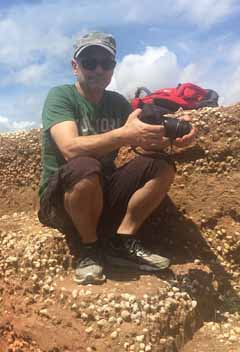 9th November, 11 am (IST): Philip John Piper, Professor of Archaeology in the School of Archaeology and Anthropology, Australian National University, Canberra, Australia. Topic: A New Species of Hominin from Callao Cave, Northern Luzon, Philippines.
9th November, 11 am (IST): Philip John Piper, Professor of Archaeology in the School of Archaeology and Anthropology, Australian National University, Canberra, Australia. Topic: A New Species of Hominin from Callao Cave, Northern Luzon, Philippines.
Abstract: In 2019, the Callao Cave Research Team led by Professor Armand Mijares (University of the Philippines) reported on a new species of hominin discovered in Callao Cave, northern Luzon, Philippines. The unearthing of Homo luzonensis was the culmination of more than a decade of intermittent research at Callao by the team, and the long search for the potential producer of the Middle Pleistocene stone artefacts from the nearby Cagayan Valley. In this presentation, I will provide details on the excavations at Callao Cave, some of the unique morphological traits observed in the fossil remains of Homo luzonensis, and discuss the evolutionary and biogeographic significance of this unique species of hominin in the Philippines.
About: Philip Piper is a Professor of Archaeology at the School of Archaeology and Anthropology, Australian National University, Canberra, Australia. He is foremost a field archaeologist with more than 30 years of experience working in Europe and Southeast Asia. Over the past decade or so his research has focused on identifying and interpreting complexities in human cultural and economic behaviour from the Late Pleistocene to mid-Holocene in Mainland and Island Southeast Asia. Since 2007, Professor Piper has also been a member of the Callao Cave Research Project team that discovered the unique species of hominin Homo luzonensis.http://www.sharmaheritage.com/images//207f5e99f.jpg


